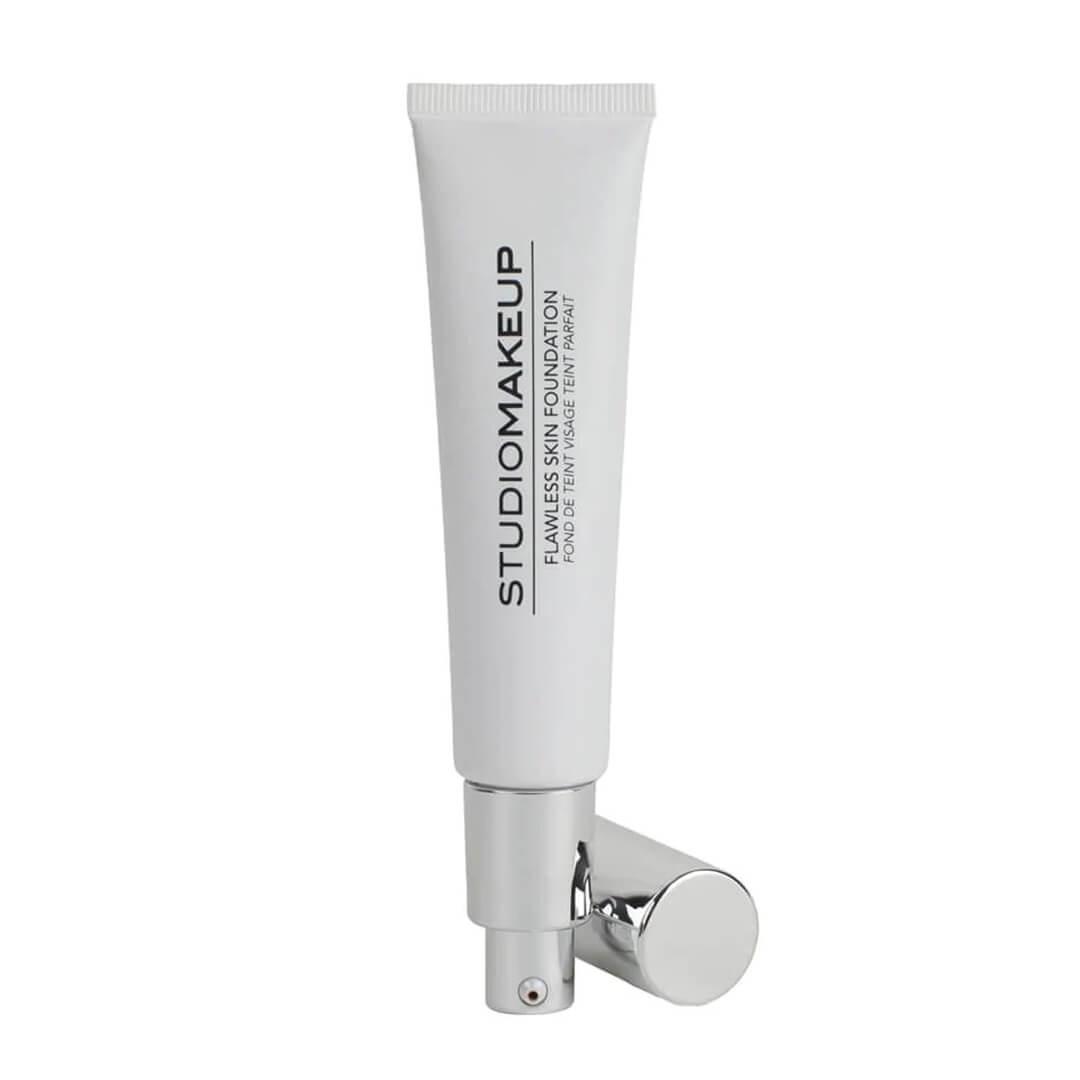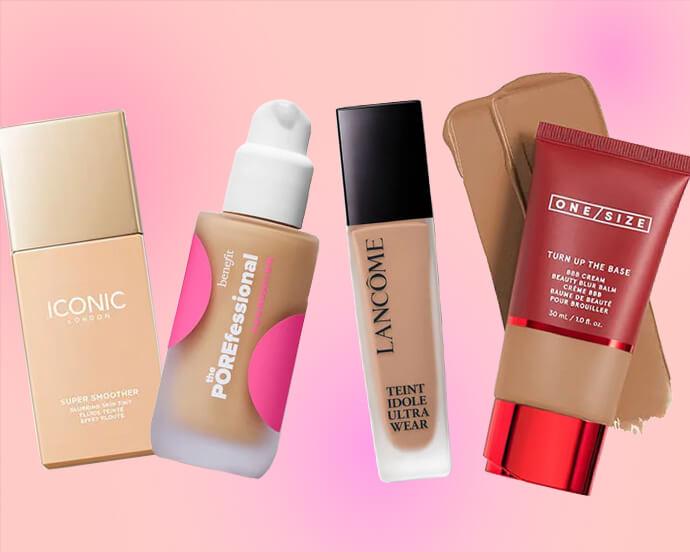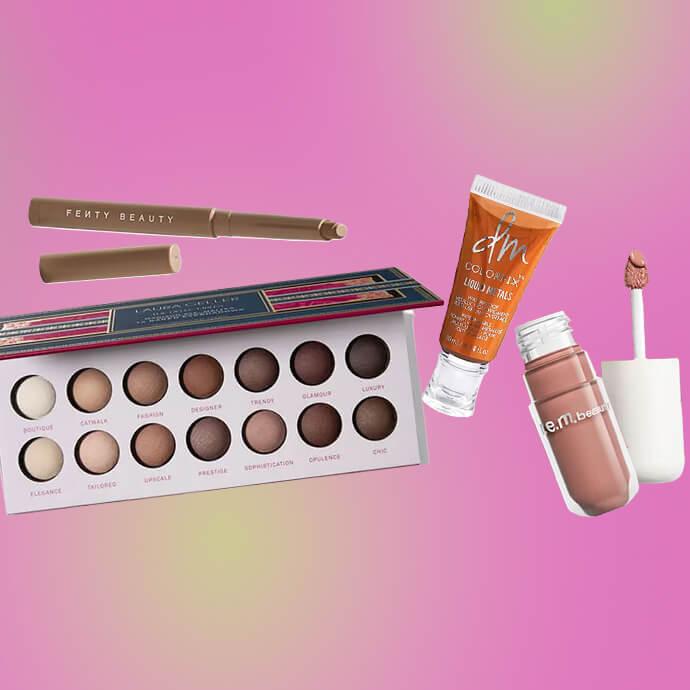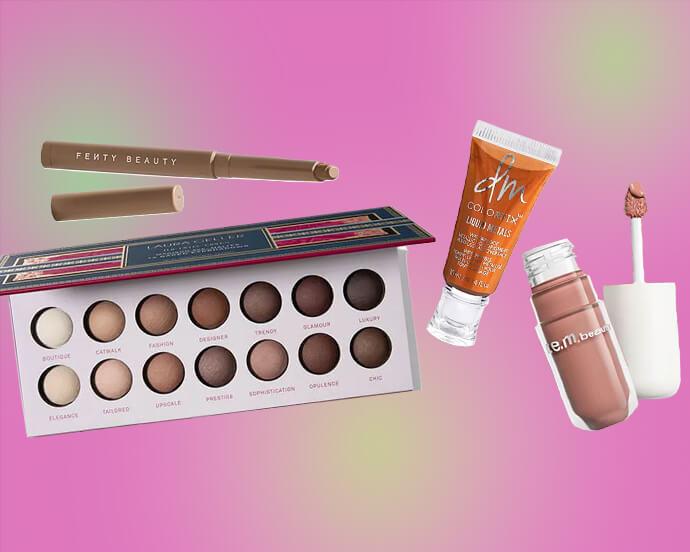How to Apply Foundation: Everything You Need to Know About Your Base



Runa Bhattacharya


Chat up any makeup expert for tips on achieving flawless looking makeup and the one step they’ll rarely ever skip is foundation. Besides skincare, foundation is the key to creating makeup looks that not only last, but enhance your already beautiful skin so that your good looks don’t get lost underneath your blush, highlighter, contour, and eyeshadow. After all, there’s a reason it's called foundation—it lays the groundwork for any smooth, flawless beauty look.
Whether you’re after smooth, matte skin, a hydrated, dewy glow, or an even complexion, there’s a foundation product out there that fits. But with all the different options available, it’s no surprise that selecting the right formula can be confusing (raise your hand if you’ve ever gotten overwhelmed in the beauty aisle). “I think there are two important things to consider! What kind of coverage you would like (minimal, light, medium, full) and what your skin type is like (dry, oily, combo),” says Lindsay Kastuk, a makeup artist in NYC. To help you (and us!) feel confident choosing a foundation, we're sharing our best foundation tips from the pros, plus a simple step-by-step tutorial on how to apply it.
Check out this video for a deep dive into finding the right foundation for your unique skin type.


It's about glam time you treated yourself.
MEET THE EXPERT
Lindsay Kastuk is an NYC-based makeup artist.
Angela Boswell is a beauty professional who does hair and makeup for television, film, weddings, editorial photoshoots, and more.
5 Steps to Applying Flawless Foundation Like a Pro
Step 1. Start with clean skin
Starting your foundation application with a great skincare routine is super important when it comes to setting yourself up for makeup success. Before you begin applying makeup, make sure your face is a clean canvas. Use a gentle, hydrating cleanser to get rid of dirt and makeup residue without stripping skin. We like IT COSMETICS Confidence in a Cleanser because it's super moisturizing, which leads us into your next step—hydration.
Step 2. Moisturize, moisturize, moisturize
What’s one step you shouldn’t skip before foundation? “HYDRATION! Even if you are oily, you want to properly hydrate your skin when applying foundation. Choose a heavier moisture for dry skin and lightweight for oily skin,” says Kastuk.
Step 3. Apply a primer
Primers are designed to perfect skin and create a strong base for foundation to grip onto, meaning it will also help your makeup last longer and look smoother. Squeeze a dime-sized amount of your primer onto your fingertips or a flat foundation makeup brush and blend the primer evenly and outward, adding more as desired to target specific areas. If you have oily skin or combination skin, choose a mattifying primer (like SMASHBOX COSMETIC Photo Finish Control Mattifying Primer).If you’re more dry, go for a hydrating or dewy version (such as GLOSSIER Priming Moisturizer).
Step 4: Apply your foundation
Depending on the type of foundation you choose, your application technique will vary slightly. Here's a quick guide to a few of the most popular types:
Liquid foundation and cream foundation.
”I love to dot liquid foundations around my face so I don't apply too much. A fluffy brush is also great for this to give a light and even coverage,” recommends Kastuk. When applying liquid foundation, hair and makeup artist Angela Boswell says, "I prefer a duo fiber brush [a makeup brush made with two different fiber bristles]. It's perfect for blending and doesn’t waste product. A slightly moistened beauty sponge is also a great tool." We recommend BEAUTYBLENDER ORIGINAL BEAUTYBLENDER Makeup Sponge, the OG, award-winning makeup sponge that applies and blends liquids and creams like a dream.
Start by dabbing a little bit of foundation onto the back of your hand, and then lightly dip your beauty tool into the foundation. With the product now on your tool, dot the product around your face. Then, gently blend it all over, making sure to move from the center of your face outward. "I typically use my fingers to help blend and smooth any uneven spots," says Boswell. For even more info on how to apply liquid foundation with a foundation brush, head here! And for cream foundations? Keep it simple. “For Creams, I really find fingers to be the best. The heat of your hands melts the product and it just melts into the skin this way,” says Kastuk.
Powder foundation.
To apply powder foundation, grab a large powder brush (try COMPLEX CULTURE Press & Set • Bronzer Brush) and lightly swirl it into the product. Remove the excess by gently tapping the makeup brush handle over the product with your finger a few times. Then, swipe the product onto your face in large, circular strokes. Repeat this process until you've achieved the coverage you want. One thing to keep in mind: applying liquid or cream products over powder foundation could lead to streaks, clumping, and cakiness, so you’ll want to apply concealer before your foundation. Read our full guide on how to apply powder foundation here.
Stick foundation.
This style of foundation is great for on-the-go use because you can literally apply it straight from the tube. Dab the foundation on your forehead, nose, chin, and cheeks (a single swipe in each area is usually enough for initial coverage), then blend in the foundation using either your fingers, a makeup sponge, or a brush like REALHER Nothing is Impossible Vegan Foundation Brush.
Step 5: Set your face makeup
After you've spent all that time perfecting your foundation and the rest of your makeup, you'll want to make sure you properly set it all so it stays put. When setting makeup, Boswell says, "I like to use a loose translucent setting powder with a fluffy brush for a light finish. Or a powder puff for more of a matte finish. If I use a powder puff I always follow with a fluffy brush over the face to make sure I remove any excess powder."
How to choose the right type of foundation
Pick the right formula
Now that you’ve got the application steps down, the next stop on your foundation journey is picking out a foundation formula. Liquid foundation and powder foundation are the two most popular types, but there are also options like cream formulas, stick formulas, and BB and CC creams. Spoiler alert: Your skin type plays an important role in the type of formula you go with. "I typically use liquid foundation on normal to dry complexions or mature skin," says Boswell. This way, it won’t look cakey. Liquid foundations and BB creams are often a great choice for those with dry skin as they often also come with moisturizing benefits in the form of hydrating ingredients. In some cases, liquid foundations can cause oil-prone skin types to appear more oily. However, there are plenty of oil-free mattifying liquid foundations that offer the best of both worlds.
Powder foundations are a go-to for beginners because they’re quick and easy to apply. Boswell says she likes to use powder foundations on oily skin as they can help to absorb excess oil. However, she adds, "Powder foundation can settle into fine lines and wrinkles," so it might not be the best choice for those with more mature skin.
Pick the right finish
There are three primary types of foundation finishes to know: matte, dewy, and luminous. Matte-finish foundations are formulated without any ingredients that add shine or dewiness, and often contain ingredients that absorb oil. They leave skin looking smooth, shine-free, and airbrushed. Dewy-finish foundations, on the other hand, don’t shy away from the shine. These foundations make your skin look bright, glowy, and naturally radiant. They're also often made with moisturizing ingredients to hydrate skin. Lastly, luminous foundations offer a lit-from-within type of glow. They're not quite as glowy as dewy foundations and not quite as flat as matte. They’re sometimes called “skin-like” or natural finish foundations, making them an ideal happy medium.
The foundation finish you choose mostly depends on your personal preference, but your skin type also plays an important role. Because matte foundations are typically shine-free, they’re great for controlling oil, making them ideal for oil-prone skin. Dewy foundations boost moisture, making them a great choice for those with dry skin. Overall, Boswell says, "Powder foundations tend to have more of a matte finish whereas liquid foundations are dewier."
Pick the right shade
The magic of a great foundation is when it looks invisible on skin. The color should blend in seamlessly with your natural skin tone—like your skin but better. Foundation shades can range from light and medium skin tones to dark and deep tones with tan shades in between. First, find where your skin tone fits in that range. To further narrow down your options, you'll need to take your skin's undertones into account. Undertones can be cool, warm, or neutral. Brands like BEAUTYBLENDER make it easy to find your match. Their Bounce Liquid Whip Long Wear Foundation comes in 40 shades, ranging from very fair to very deep and everything in between.
Next, you'll need to swatch the foundation on your skin to see if it's a match. “I always like to match my neck. You can add bronzer or blush to incorporate some of the color you have in your chest and shoulders (which sometimes can be a bit darker than your face), so there is a seamless blend from my face to my neck. Here’s a pro matching tip. If you already have a foundation that matches you, swatch it on your arm when you're going to the store to buy a new one. Swatch options next to your existing foundation shade so you can see it without trying it on,” Kastuk tells us.
To properly test foundation, smear a vertical line onto your face going from the lower half of your cheek to just below your jawline. The right foundation should basically disappear into skin with little to no lines of demarcation. Another pro tip: Because foundation can sometimes oxidize (change color once it reacts with air), you’ll want to let the swatch sit on your skin for a few minutes before you determine how well it blends into your skin. And don’t forget to check it in natural light to find your best fit, so head to a window if you’re indoors!
With so many shades, types, and finishes to choose from, applying foundation is a fun and easy way to experiment with makeup. Whether it’s dewy or matte, full coverage, or sheer, the best foundation products will ensure you put your best face forward.
Below, discover what we’ve found are some of the best foundations on the market.
1. Best for a Natural Finish:
KJAER WEIS Cream Foundation

Courtesy of KJAER WEIS
This creamy, semi-matte, medium-to-full coverage foundation is super easy to apply with a makeup sponge or just your fingers. Dab the foundation on your T-zone and blend outwards toward the hairline and jawline.
2. Most Buildable Coverage:
STUDIOMAKEUP Flawless Skin Foundation

Courtesy of STUDIOMAKEUP
Not all foundations are easily buildable without being cakey. This one has the perfect light to medium coverage to hide any imperfections—all with a pretty dewy finish. It’s especially great for those with dry skin types.
3. Most Glowy Full-Coverage:
ANASTASIA BEVERLY HILLS Luminous Foundation

Courtesy of ANASTASIA BEVERLY HILLS
Some can think “full coverage” and think that means heavy, cakey, and dry. But this lightweight option is just the opposite. Though it fully covers redness, acne, and any discoloration, the finish is glowy and natural-looking.
4. Best Natural-Matte Foundation:
KOKIE COSMETICS Full Cover Foundation

Courtesy of KOKIE COSMETICS
If you prefer your full-coverage foundation to have a touchable matte feel—as in one that isn’t too dry—choose this silky formula. It truly is the best of both worlds, and it’s great for oily or combination skin tones.
5. Best Skincare Ingredients:
WANDER BEAUTY Nude Illusion Liquid Foundation

Courtesy of WANDER BEAUTY
Not only does this medium-to-full coverage foundation cover redness, acne, and any dislocation, it also helps improve skin over time. Hyaluronic acid helps your skin retain moisture, while plant and fruit extracts provide the vitamins your dermis needs.
6. Best for Oily Skin:
M·A·C Studio Fix Powder Plus Foundation

Courtesy of M·A·C
Those with especially oily skin who run from anything “glowy” will favor this matte powder foundation. It’s still buildable, with medium to full coverage depending on how much you need and where. Apply the velvety-smooth formula in places you want a little more coverage, and the effect will be utterly seamless.
Want to try the latest and greatest foundations? Get in on all the IPSY Glam Bag! Take our Beauty Quiz now to get started. Already an Ipster? Refer your friends to earn points, which you can use toward products. Either way, don’t forget to check us out on Instagram and Twitter @IPSY.
Like this article? Share it with your friends by clicking the icons below!
Liked this post? Share!
Related Stories


Makeup
Want an IRL Filter? These Are the Best Blurring Foundations
Published on Dec 12, 2025 • 5 min read


Makeup
How to Expertly Apply Eyeshadow on Mature Skin
Published on Dec 10, 2025 • 6 min read


Makeup
How to Use Bronzer and Contour to Sculpt Your Face Like a Pro
Published on Dec 5, 2025 • 9 min read


Makeup
Makeup for Older Women That Works With Your Skin, Not Against It
Published on Dec 1, 2025 • 12 min read


Makeup
2026’s Biggest Makeup Trends Are a Maximalist Dream
Published on Dec 1, 2025 • 8 min read


Makeup
2025’s Biggest Makeup Trends: Go Big or Go Home
Published on Dec 13, 2024 • 7 min read


Makeup
16 New Year’s Eve Makeup Ideas to Fashionably Ring in 2026
Published on Nov 25, 2025 • 10 min read


Makeup
Your 2026 Beauty Horoscope Is Here—and the Stars Are Serving Looks
Published on Nov 25, 2025 • 9 min read


Beauty Picked Just for You
Get 5 products worth up to $70
Plus exclusive access to epic deals up to 80% off
Starting at just $14/month. Cancel anytime.